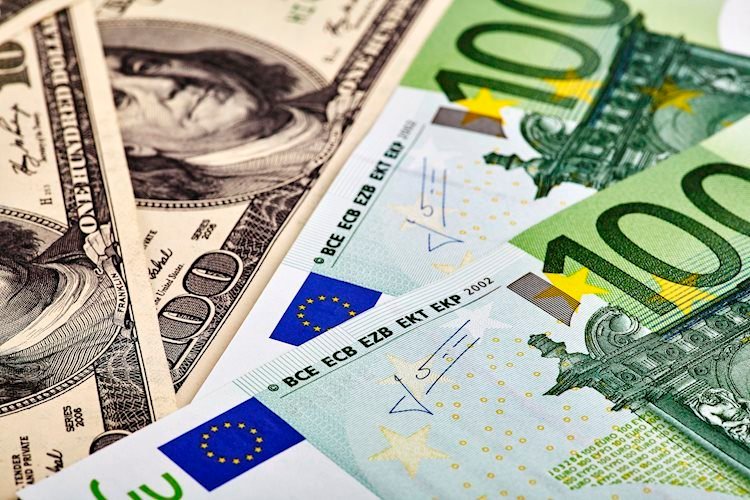EUR/USD Outlook: Bulls Target Higher Ground Ahead of Critical Fed Decision Amid Climbing Channel Support
EUR/USD currency pair starts the week softer, trading marginally below mid-1.1500s as the US Dollar modestly rallies. That said, the pair is still just short of multi-year highs near 1.1630 with traders holding out for the pivotal FOMC decision on Wednesday that might influence near-term market sentiment. Though probability of a September Fed rate cut constrains aggressive USD purchases, the hawkish bias of the European Central Bank remains supportive of the euro. Technically, the pair is still in a strong short-term bull trend in an ascending channel, so there is more potential for further price gains. Significant support is around 1.1500 and 1.1430, with the levels of resistance at 1.1600 and 1.1630 likely to cap the price unless bullish momentum accelerates. KEY LOOKOUTS • Market players are waiting for the Federal Reserve policy announcement, which has the potential to dictate the near-term trajectory of the USD and EUR/USD pair. • Signs of the European Central Bank nearing the close of its rate-cutting phase continue to underpin euro strength. • Levels of support are at 1.1500 and 1.1430, with nearest resistance at 1.1600 and the multi-year high at 1.1630. • Mild US Dollar gains may cap EUR/USD upside, but any indication of fresh USD weakness would encourage fresh buying interest in the pair. EUR/USD pair is trading with a modest bearish inclination at the start of the new week, just below the mid-1.1500s as there has been a modest rise in the US Dollar. Even with the minor retreat, the pair is still near its highest level since October 2021, underpinned by speculation that the Federal Reserve could restore rate cuts as soon as September. Meanwhile, the European Central Bank’s recent turn to a hawkish policy has kept supporting the euro. Technically, the pair is still in a well-established ascending channel, and this represents a short-term bull trend that benefits buyers. Support comes in at 1.1500 and 1.1430, while resistance comes in at 1.1600 and 1.1630, with a possible breakout above 1.1660 paving the way for more gains towards the 1.1700 level. EUR/USD begins the week lower but remains close to multi-year highs as FOMC decision is awaited. September’s possible rate cut by the Fed and ECB’s aggressive stance continue to fuel euro’s upward momentum. Technical charts indicate the pair is in a bullish trend inside an uptrending channel. • EUR/USD is trading with a weak bearish inclination below mid-1.1500s during early Asian market hours. • The currency pair is hovering close to its all-time high since October 2021 at around the 1.1630 level. • Market attention is riveted on the next FOMC decision, with anticipation of a September Fed rate reduction. • The European Central Bank’s aggressive policy orientation underpins ongoing euro appreciation. • The uptrending channel on the daily chart shows a robust short-term bullish trend. • Support levels are at 1.1500, 1.1450, and 1.1430; a fall below would target 1.1370. • Resistance levels are at 1.1570, 1.1600, and 1.1630, with a breakout above 1.1660 potentially unlocking the door to 1.1700. The EUR/USD currency pair starts the new trading week on a reserved note as traders wait for the much-awaited FOMC policy decision later on Wednesday. The result of this meeting is likely to give new hints on the monetary policy direction of the Federal Reserve, with increasing rumor that the Fed might restart its rate-cutting cycle as soon as September. This US interest rate uncertainty has curbed aggressive action in the US Dollar, leaving traders in wait-and-see mode before the central bank’s announcement. EUR/USD DAILY PRICE CHART SOURCE: TradingView On the European side, the recent cues from the European Central Bank indicate that its rate-cutting cycle is near completion, which has provided some relief to the euro in recent trading sessions. The policy divergence between the Fed and the ECB has acted in favor of the euro’s relative strength. In the meantime, wider market sentiment isstill guarded in response to mixed global economic data and continued geopolitical uncertainty, keeping traders on their guard and choosing to be selective in their positioning as they wade through the week’s decisive events. TECHNICAL ANALYSIS EUR/USD continues to be well-contained within an uptrending channel, showing a strong short-term bullish trend. Daily chart oscillators remain in positive range, indicating that the momentum is still in the hands of buyers. There is immediate support at the 1.1500 psychological mark, with additional weakness cushioned by the 1.1450-1.1430 area, where horizontal and trendline support converge. To the upside, resistance markers are 1.1570 and 1.1600, with a strong break above the recent high at 1.1630 potentially setting the stage for a journey to the 1.1700 handle. FORECAST Should the uptrend momentum continue, EUR/USD has the potential to test immediate resistances of 1.1570 and 1.1600 in the short run. A solid breakout above the latest multi-year high at 1.1630 might initiate new buying interest, driving the pair up towards the top line of the uptrending channel around 1.1660. Stronger support above this level might pave the way for an additional rally up to the psychological 1.1700 threshold, solidifying the positive view. On the negative side, any corrective pullback will likely have early support around the 1.1500 psychological level. A break below that level could expose the 1.1450-1.1430 horizontal support area, which also overlays the lower edge of the ascending channel. Should bearish pressure increase and the pair fall below this key support, EUR/USD can continue its slide down towards 1.1400, with the next significant support lying around 1.1370-1.1365.





